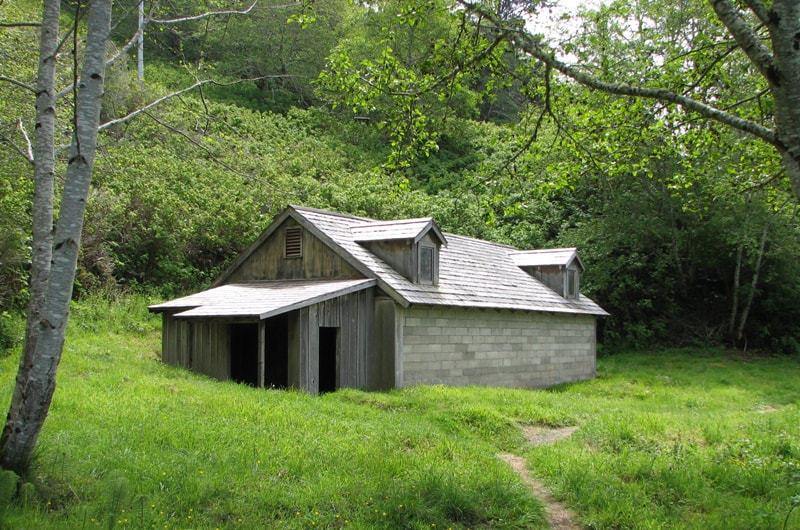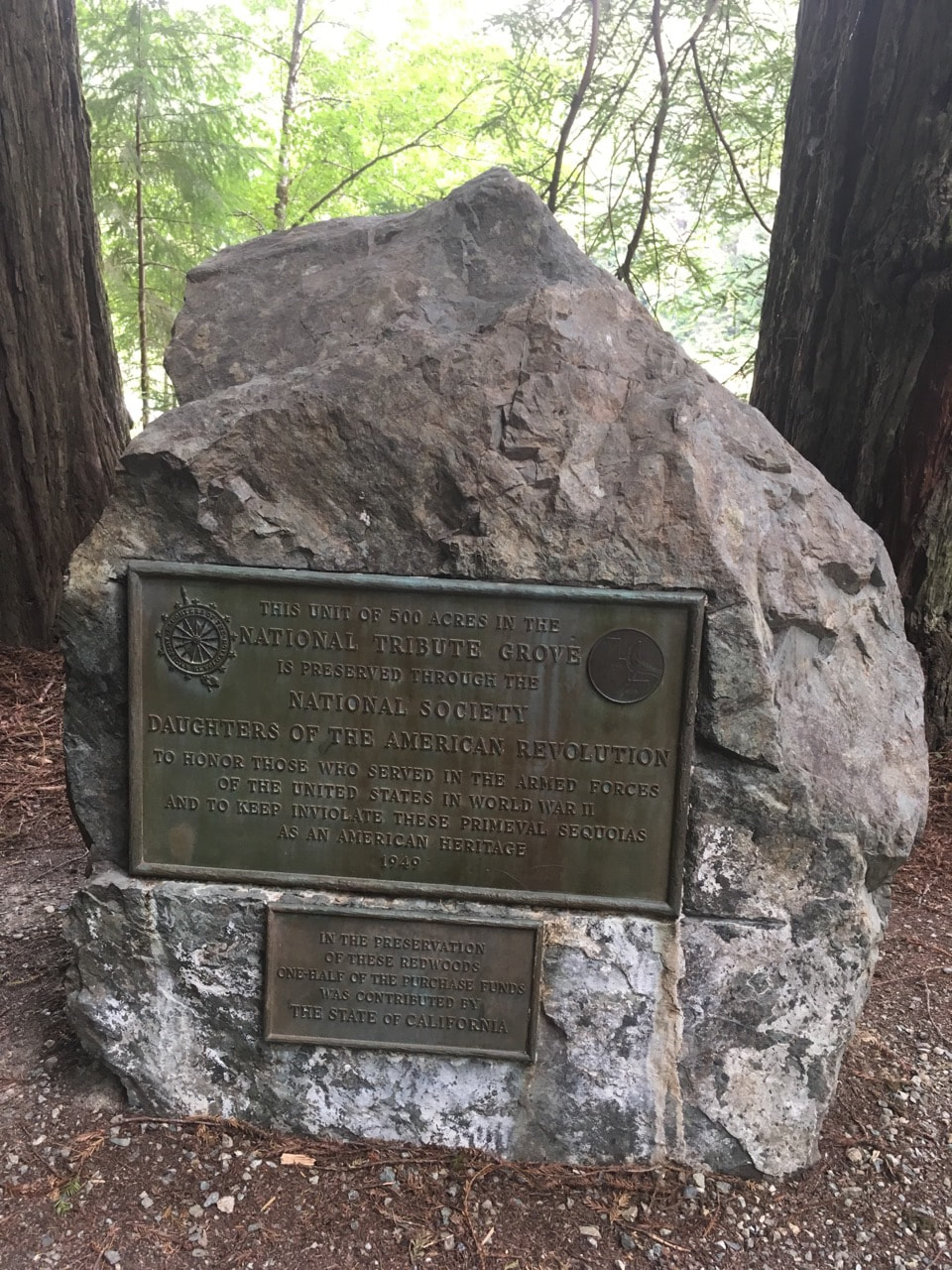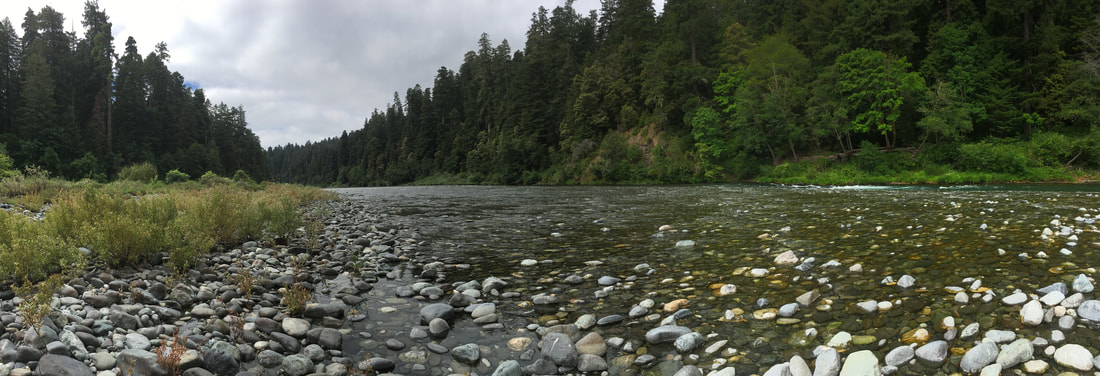| | World War II left its mark in Humboldt County in a few different ways. A number of community members served in the war, and many are memorialized in our special exhibition at the Airport. Items from many locals who served can be found in the Clarke collections, from photos to uniforms. Local buildings were even affected, with Founders Hall at HSU being painted in camouflage to the bunkers in Samoa and other structures. Some of those structures are within the present-day Redwood National and State Parks, most notably the Klamath River Radar Site B-71. Rather than being painted green, brown and black, the site used a different type of camouflage to conceal its real purpose. |
| Another mark is located further north, in Jedediah Smith Redwoods State Park. Known as the largest WWII memorial in the US, the National Tribute grove is a 5,000 acre grove dedicated in memory of those who died in WWII and was started by the Daughters of the American Revolution, who invested $3,000 of the $26,000 needed to purchase the grove for preservation. The Garden Club of America pitched in to help raise money and the effort was led by Save the Redwoods League, who had spearheaded the memorial grove movement. The project began in 1946 and the names of the donors and people honored by the grove were recorded in a “Golden Book” in the National Archives. The grove was officially dedicated by Newton B Drury on September 25, 1949, who stated that the grove would be a “memorial of eternal gratitude, eternally expressed”. For a time, the exact location of the grove marker had been lost in foliage due to lack of access to the site, but in 2014, the marker was found and moved to a popular day use area near the grove to ensure that the memorial would be easily accessible. |
Largest WWII Memorial in U.S. Rediscovered in the Redwoods- Save the Redwoods League
Radar Station B-71: Redwood National Park
Nation's Largest Memorial To WW2 Vets Rededicated At Redwood National And State Parks
Historic California Posts, Stations and Airfields, Klamath River Radar Site B-71 (Crescent City Radar Site B-71, Trinidad Radar Site B-71)




 RSS Feed
RSS Feed